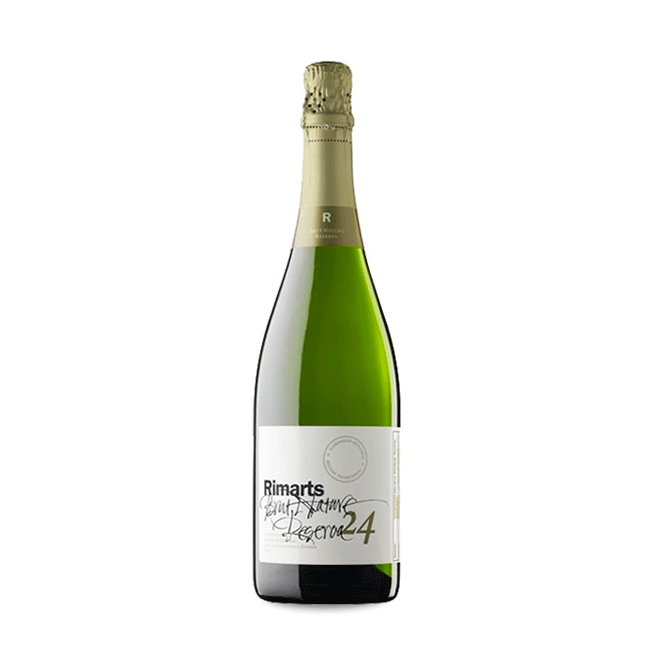.png.transform/rendition-xs/image_image%20(1).png)
Cava: One of the World’s Most Food-Friendly Wine Styles
François Chartier has recently presented a molecular study showing that Cava is unique, and combines to perfection with an infinite number of flavors from all around the world.

If you’ve only ever served Spain’s biggest wine export, Cava, at a party alongside light bites or canapés, then you might want to expand your pairing repertoire.
François Chartier, author of the book Taste Buds and Molecules, has proved that Cava is particularly suited to matching food, largely due to its natural sparkle, “The analysis of the chemical structure of Cava’s bubbles clearly shows they are loaded with surfactant molecules, hundreds of which are aromatic particles.” His study classifies these aromas according to the main styles of Cava following the premise that pairing foods and wines that are dominated by aromatic molecules of the same family creates a powerful synergy that is more than the sum of its parts.

For Salvi Moliner, winemaker of Oriel Rossell, a small family-owned estate winery in Penedès, which produces Cavas listed in Michelin-starred restaurants, particularly Gran Reserva Brut Nature styles, the climate is the secret to the versatility of Cava: “This area has a Mediterranean climate with warm summers so acidity is not as high as in Champagne for example. This means that we add less sugar in the dosage. Also, ageing on the lees creates volume and body in the mouth and the bubbles refresh the palate, highlighting the acidity. This is why Cava is an all-terrain vehicle, offering multiple pairings, from aperitifs to smoked salmon to meat.”
Young Cava (9 months + ageing)

This is a style marked by freshness – François highlights notes of aniseed, white fruit and flowers, which share aromatic molecules with fresh coriander, green apple, dill, fennel and shrimp. Sommelier Álex Pardo of Madrid’s Coque (** Michelin) comments, “Younger Cavas work perfectly with exotic dishes like Thai, Vietnamese or Indian food, Spanish dishes like escabeche or a fresh Peruvian ceviche with its touch of spice. It goes without mentioning that it can be enjoyed with raw fish like sushi or oysters.”
Reserva Cava (15 months + ageing)

Here the fruit moves to riper white and yellow pear, apricot, peach and pineapple as well as notes of almond, pastry and honey. Chartier lists many ingredients that could work here including tomato, toast, olive oil, French fries, leeks and smoked fish, elements which are highlighted in the following pairing suggested by Arantxa Calonge, sommelier at Huerta de Carabaña of Rimarts Brut Nature Reserva 24 with the restaurant’s dish of Pisto in red tuna nigiri, crispy potato and basil oil. She explains, “The subtlety of the Cava ensures that the tuna remains center-stage, while the acidity makes the flavor of the tomato stand out and basil underscores a refreshing, herbal finish.”
Gran Reserva Cava (30 months + ageing)

Long ageing means this style is more marked by autolysis, which adds toasted, buttery and spicy notes. These are Cavas that pair with complex dishes including toasted nuts, mature cheeses, aged beef and foie gras.
Bruno Colomer, winemaker at Raventós Codorníu believes balance is the key factor in pairing foods with their Ars Collecta range of Gran Reserva Cavas: “One of the key characteristics is the balance they show between freshness and body, aroma and structure on the palate. They have a long capacity for ageing, that’s to say; they have a great deal of energy and vitality despite their ageing. In addition, 40 months’ ageing gives a velvety texture, they are extremely smooth with broadness on the palate. This all means that they can be served with dishes that are well structured, smooth and delicate all at the same time, lightly flavored dishes that allow the raw material to shine, such as sole with a cream sauce, oysters, seafood, white meats, canelones, rare meat or raw fish.”
For Álex Pardo, the notes of toasted nuts and the oxidative touches in Gran Reserva Cavas means that they pair perfectly with pan-fried mushrooms, or Coque’s roast suckling pig with crispy skin.
Marcos Arreza Martín of the 5-star hotel Villa Magna, recommends baked turbot or the classic bacalao a la vizcaína – salt cod in a sauce made from red choricero peppers – with Kripta from Agustí Torelló, a Gran Reserva Brut Nature, made from old vine Macabeo, Xarel.lo and Parellada aged for 48 months.
Marcos also reminds us that cava is a multi-regional DO, and suggests some local pairings - Tantum Ergo Brut Nature Pinot Noir, a rosé cava from Bodegas Hispano Suizas ,ocated in the Utiel-Requena area of Valencia, “ties together the flavors in a paella beautifully,” while Vía de la Plata Cava Reserva Chardonnay from Extremadura is recommended with a local “torta” cheese”.
Endless possibilities for an endlessly versatile and enjoyable sparkling wine.
Text: Anna Harris-Noble







